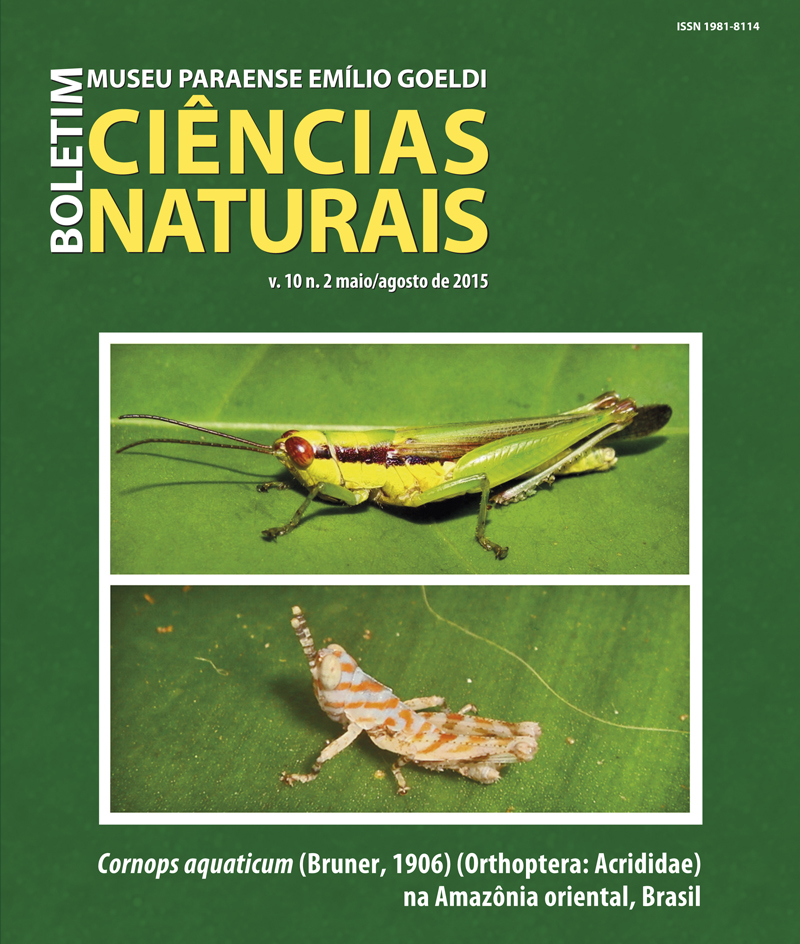Geology and characteristics of the mineralizing fluid in the Jerimum de Cima and Babi gold prospects, Cuiú-Cuiú goldfield, Tapajós Gold Province, Amazonian Craton, a fluid inclusion and stable isotope study
DOI:
https://doi.org/10.46357/bcnaturais.v10i2.481Keywords:
Tapajós, Pressure, Temperature, Source fluid, MetallogenyAbstract
The Jerimum de Cima and Babi gold prospects are located in the Cuiú-Cuiú goldfield, Tapajós Gold Province, Amazonian Craton. Jerimum de Cima bears moderate mineralization, whereas Babi is only weakly mineralized (not economic). The petrographic investigation defined tonalite, granodiorite and monzogranite as the host rocks in both targets. Sericitization, silicification, sulfidation, chloritization and carbonatization occur in both prospects, as fissure-filling and disseminated alteration. Aqueous, aqueous-carbonic and carbonic fluid inclusions (FI) have been identified. The aqueous-carbonic FI occur only at Jerimum de Cima and likely represent the mineralizing fluid. These FI were produced by fluid immiscibility (phase separation) and, possibly, were mixed with late, colder aqueous fluids. Stable isotopes analyses of hydrothermal minerals present in veins and disseminated alteration indicate mineral precipitation between 305 and 330 °C and between 108 and 205 °C, and suggest magmatic and meteoric sources for the fluids. As a whole, our data are compatible with magmatic-hydrothermal gold systems (intrusion-related), and with mixing of magmatic and meteoric fluids. The lack of CO2 at Babi may have been caused by the late timing of alteration, when compared with Jerimum de Cima, and might also explain the weak mineralization at Babi.
Downloads
Published
Issue
Section
License
Publication means fully assigning and transferring all copyrights of the manuscript to the journal. The Liability Statement and
Assignment of Copyrights will be enclosed with the notice of acceptance. All the authors must sign the document and return it to the journal.






